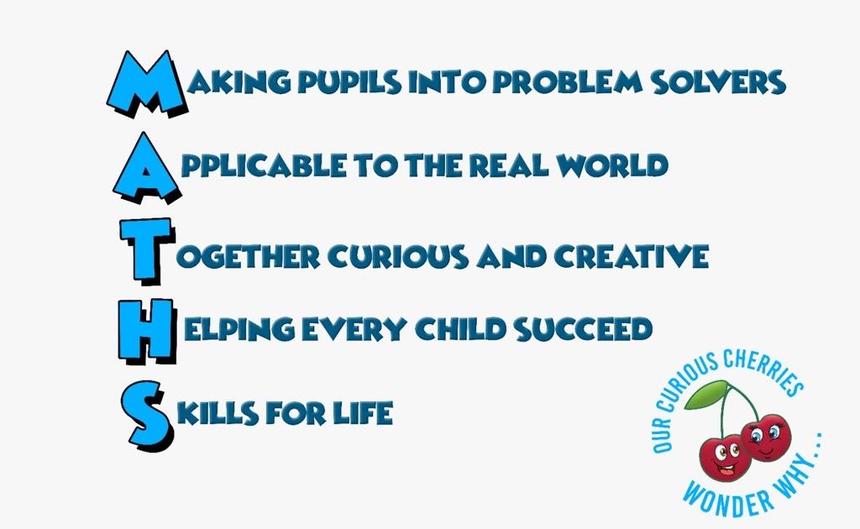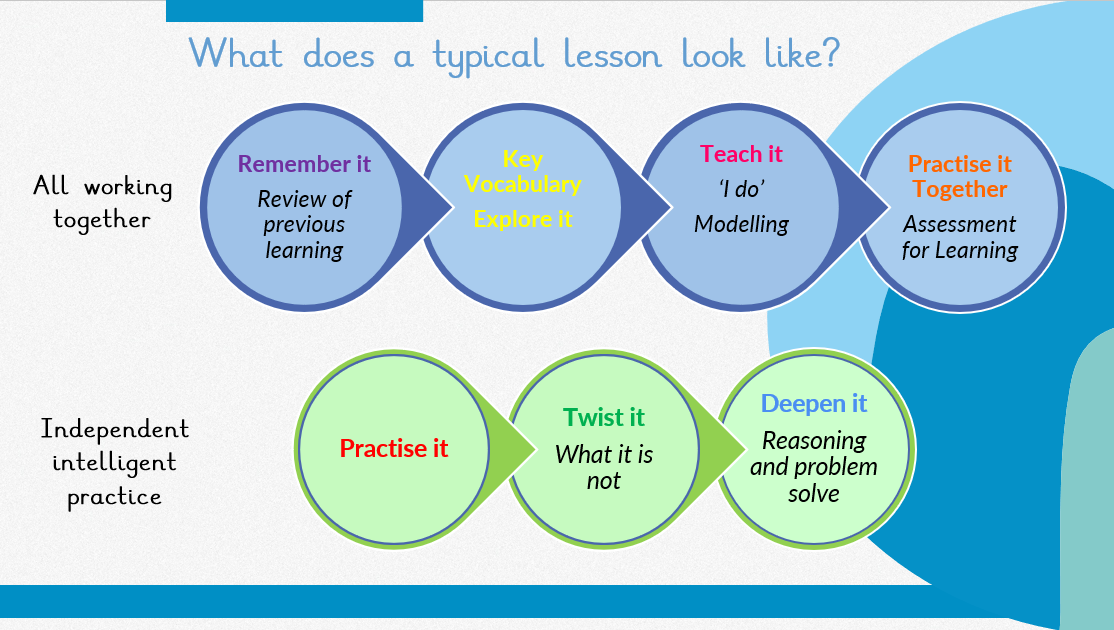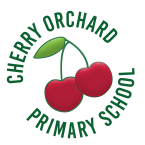Maths
Vision

INTENT
At Cherry Orchard, our curriculum intends to develop confident mathematicians with the ability to apply skills to a range of situations- in their math’s lessons and in real life. Our curriculum enables children to develop their automaticity, as well as their problem solving and reasoning skills. Through the delivery of a rich, inspiring curriculum, taught by highly enthusiastic staff, we aim to spark curiosity and excitement leading to a love of maths, by all.
The mathematics curriculum taught in each year group and the progression of knowledge has been taken from National Curriculum.
IMPLEMENTATION
A ‘mastery’ approach has been adapted and implemented at Cherry Orchard Primary School to include all learners, providing relevant support for those with additional needs. Maths lessons follow the small steps outlined in the White Rose ‘Schemes of Learning’. A typical lesson (from Yr1-6) follows the structure below:

We use the CPA (concrete, pictorial, abstract) approach to develop pupils’ factual, conceptual, and procedural understanding, enabling them to reason, problem solve and apply knowledge to a range of contexts. During planning, teachers consider key questions and mathematical vocabulary at the point of unit planning to support mathematical thinking. Further to this, sentence stems are utilised to support children to articulate their understanding. Throughout each lesson, teachers and teaching assistants continually assess the learning, in order to challenge those who may grasp it more quickly and support those who find the concept more difficult to grasp.
Lessons are supplemented by regular fluency sessions that are designed to reinforce and provide regular practice in the basic skills. In EYFS, Year 1 and Year 2, fluency is developed through the ‘Mastering Number’ program. In Key Stage 2, fluency is developed through Maths Express sessions, which are tailored to suit the needs of the year group.
As part of the daily diet in EYFS, all chidlren partake in a 30 minute maths lesson, which also follows the small steps outlined by White Rose. The lesson structure is tailored to suit the needs of the children.
IMPACT
As a result of our maths teaching you will see:
- Strong fidelity to our lesson design
- Articulate children who talk confidently about their learning and lesson structure.
- Children using a variety of CPA (concrete, pictorial, abstract) techniques tailored to the needs of the individual child.
- Children applying their skills and knowledge to identify misconceptions and show a deeper understanding through problem-solving and reasoning.
Children have a positive attitude towards maths, enabling them to be curious and creative. Children understand that making mistakes is part of the learning process, and they show resilience when faced with new concepts. Due to regular opportunities for fluency practise, they can retrieve and apply prior learning to a range of contexts.
Impact is monitored through teacher judgement supported by summative and formative assessments. Leaders monitor through lesson observations, learning walks, book looks and pupil voice.
Most importantly, impact can be measured by the children’s engagement in lessons and overall enthusiasm and enjoyment of maths.
